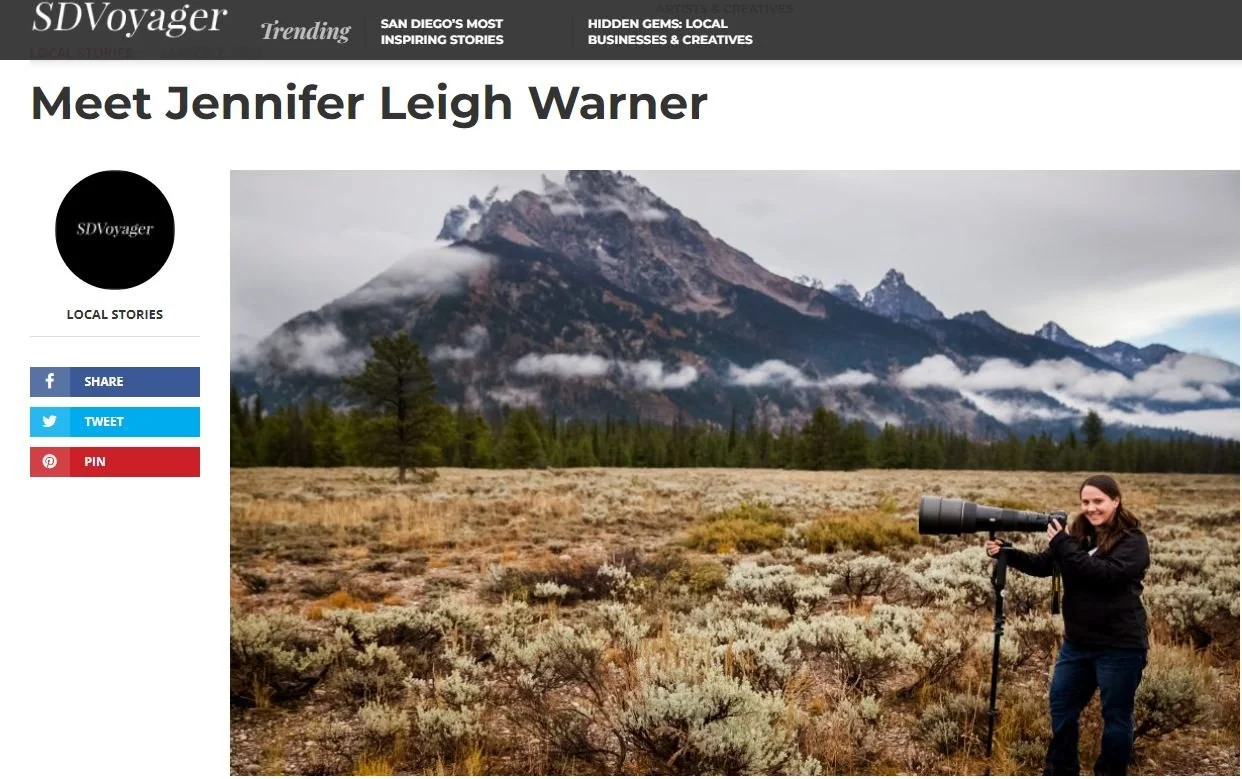Today we’d like to introduce you to Jennifer Leigh Warner.
Hi Jennifer Leigh, can you start by introducing yourself? We’d love to learn more about how you got to where you are today?
I am a conservation photographer with a passion for sharing stories to inspire others to preserve the natural world. I am also a Certified Master Naturalist and a Nikon Professional.
My passion for wildlife started as a young child. I was obsessed with Africa’s big cats and I wanted to be just like the wildlife photographers in National Geographic. In college, I studied communications and photography at the Edward R. Murrow School of Communications at Washington State University and when I graduated, I began learning everything I could from the photographers I admired.
I began my photography company in 2006, starting with displaying my photographs at coffee shops and wineries. In 2007 I was invited to collaborate on a conservation book called “The Wild Within” about Seattle, Washington’s largest wetlands. After spending a year on that project, I knew that I wanted to do more than take pretty pictures. I wanted to put my images to work to save the places and species that I was photographing.
After many years of growing my business, I began getting more involved in supporting non-profits such as the Cheetah Conservation Fund, the Seal Conservancy, Girls Who Click and the North American Nature Photography Association. I became the NANPA Ethics Committee Chair in 2018 and through that organization, we aim to bring awareness and education about the importance of behaving ethically in the field.
Now in my 16th year of business, I lead photography tours both locally and internationally, I am a public speaker, I am a photojournalist and an artist showcasing my photography throughout the United States. My images have been published in Gizmodo, the NANPA Expressions Magazine, Outdoor Photographer Magazine, WIRED, The New Yorker, National Geographic Online and Wild Planet Photo Magazine among others.
Would you say it’s been a smooth road, and if not what are some of the biggest challenges you’ve faced along the way?
As a self-employed photographer, it can be very difficult, especially at the beginning to get consistent work. For the first 11 years of my business, I had a full-time other job that was helping me pay my bills. One of the most important lessons I learned early on was the importance of diversifying my offerings so that I would have a steady stream of income.
Another challenge in a predominantly male field is being taken seriously as a women. Many people think that this industry is too dangerous or difficult for women. Because of this challenge, I have become a mentor for the non-profit Girls Who Click which encourages teenage girls to consider a career in conservation photography.
I am very lucky to have a great support system. Without my family, I would not be where I am today.
As you know, we’re big fans of you and your work. For our readers who might not be as familiar what can you tell them about what you do?
My photography focuses heavily on wildlife conservation. I specialize in wildlife photography ethics and human-wildlife coexistence especially when it comes to ecotourism. I am best known for my work on ethics and am often asked to speak about the importance of maintaining a safe distance from wildlife.
I am most proud of the work that I do involving advocacy. One long-term project I am working on deals with the protected marine mammals in La Jolla. As one of the only main-land California sea lion and harbor seal rookeries in Southern California, they face many challenges with human disturbance. I am most proud when I see that the attention my photographs brings to these issues encourages lawmakers to in act change on behalf of wildlife.
What sets me apart from others is my attention to the human side of issues. When many are photographing the wildlife, I will take a step back and examine the larger picture.
In terms of your work and the industry, what are some of the changes you are expecting to see over the next five to ten years?
The photography industry is always changing and shifting. As technology advances, more people are able to take high-quality images. This creates more competition in the field. There will always be a need for storytellers so the challenge is to keep pushing the bar on how to create images that move people to action.
Contact Info:
Email: jennifer@experiencewildlife.com
Website: https://www.experiencewildlife.com/
Facebook: https://www.facebook.com/ExpWildlife/
Twitter: https://twitter.com/expwildlife









